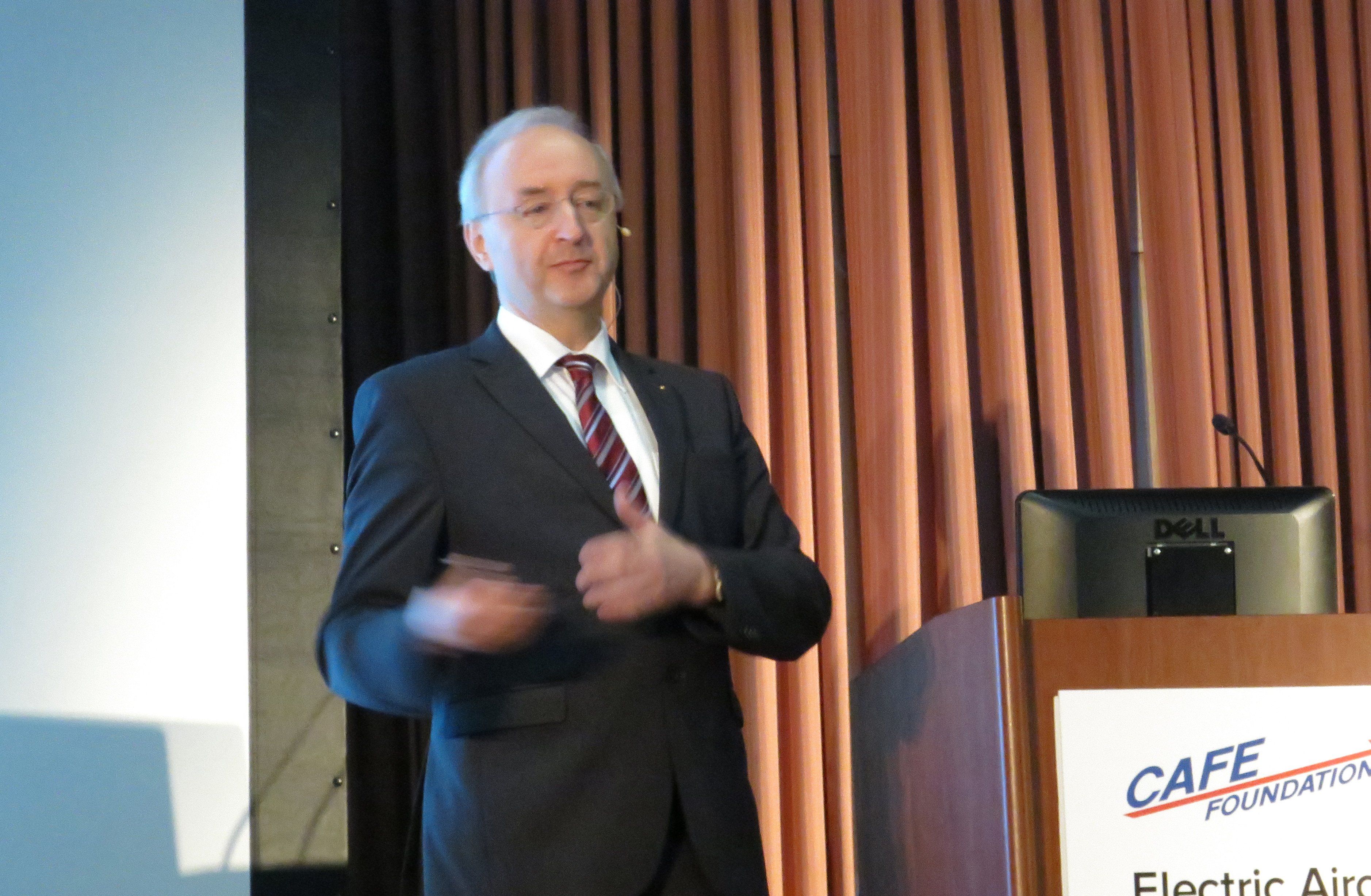
Fresh after its announcement of a new, aviation-specific electric motor, Siemens AG has mapped out a developmental path that it hopes will result in practical regional hybrid electric airliners by 2035. At the ninth annual Electric Aircraft Symposium in Santa Rosa, California, this week, Siemens’ Frank Anton said the company will invest heavily in hybrid drive systems that it believes will improve overall transportation efficiency by as much as 25 percent.
“We have investigated it over the last five years and it went from the starting of a belief to a relatively clear picture that aviation can move into hybrid electric drive,” Anton told AVweb in this podcast recorded at the symposium on Saturday. Siemens is making no market projections on volume, but its technical numbers show that a hybrid drive—a Jet-A powered generator driving its new, high-power density motors—will be more efficient than a turbofan or turboprop engine for equivalent performance. Anton said Siemens thinks the technology will apply first to regional airliners flying 50 to 60 passengers over stage lengths of up to 600 miles.
“We estimate we will have a savings of 25 percent kerosene consumption and, of course, also emissions, with the hybrid drive train,” Anton said. Further advantages are gained by separating energy conversion from thrust generation and can distribute power more elegantly, saving perhaps another 25 percent. “So overall, our hope would be that we would travel the same amount of passenger miles for half the kerosene,” Anton added.
How about weight? Jet-A-powered hybrid drives will require both an engine and a generator instead of an engine alone, as with turbofans or turboprops. “The system will be approximately the same weight because you can use a smaller combustion engine designed just for the cruise power that you need, plus the batteries added for takeoff and climb. So overall, the system should be at a comparable weight as today if you include the fact that you need a little less kerosene,” said Anton.
Aircraft design, especially the choice of a ducted fan or a conventional prop optimized for electric propulsion, will be up to aircraft designers, Anton said. “My personal expectation is that it will be efficient propellers,” he added.
As for the motor, Siemens announced that earlier this year as an offshoot of large-scale research related to transportation motors in general. The motor weighs 50 kg (110 pounds) for a claimed power output of 261 kw or about 340 HP. Anton said the motor is scalable to lower horsepower—even an LSA, if the market wants it—or up to a megawatt or more than 1300 horsepower. Anton said the ability to accurately simulate the electrical and mechanical components and performance of such a power-dense motor and to manufacture complex and compact stators and rotors made the motor practical. Cooling was also a major consideration.
Anton said a prototype hybrid system will soon fly on a certified aircraft as a proof of concept, but he declined to identify the aircraft type. As we’ve reported previously,Pipistrel is well along with development of a hybrid drive for its Panthera high-performance retractable. Pipistrel has confirmed that Siemens is involved in at least the motor development.


































